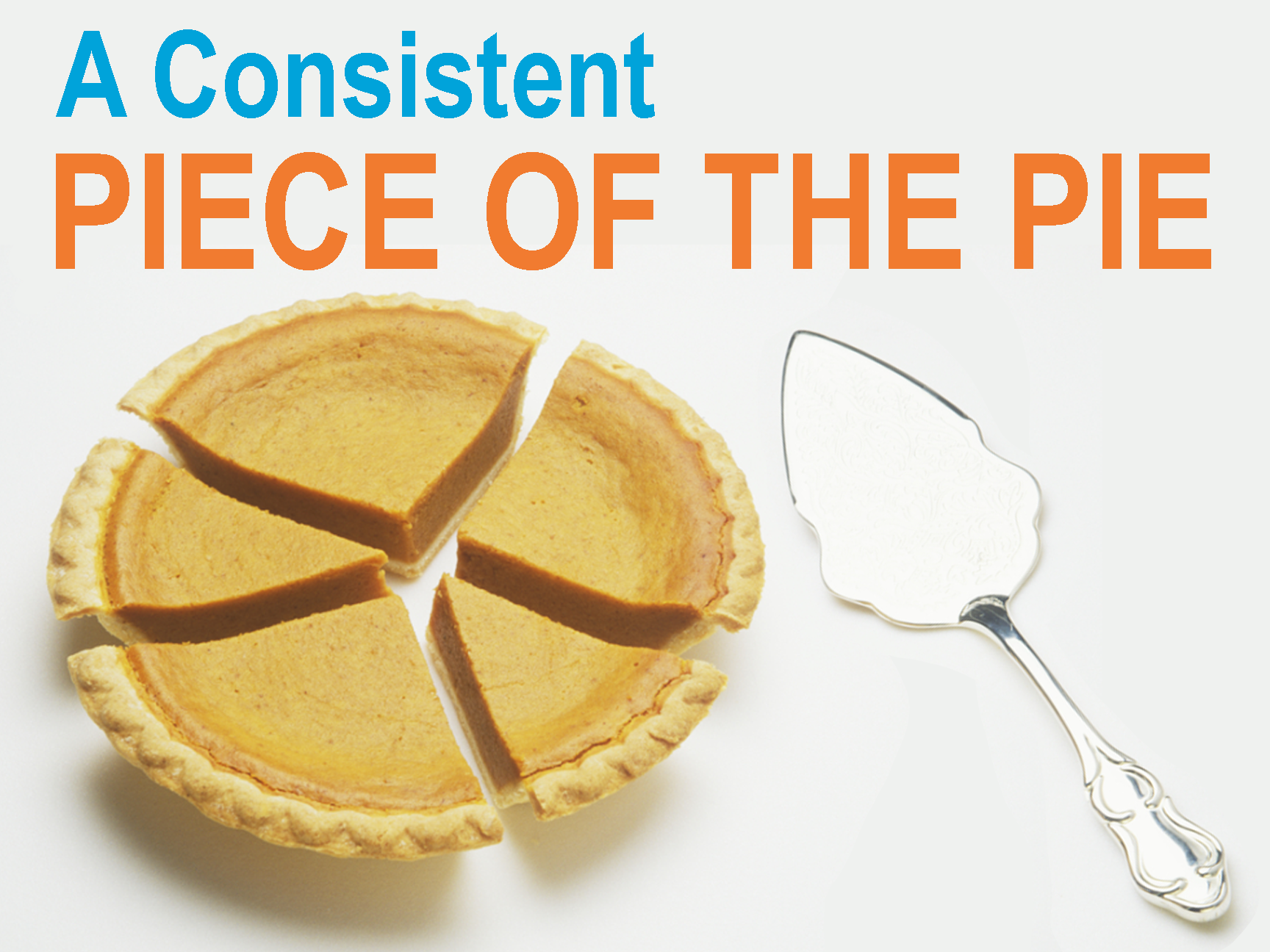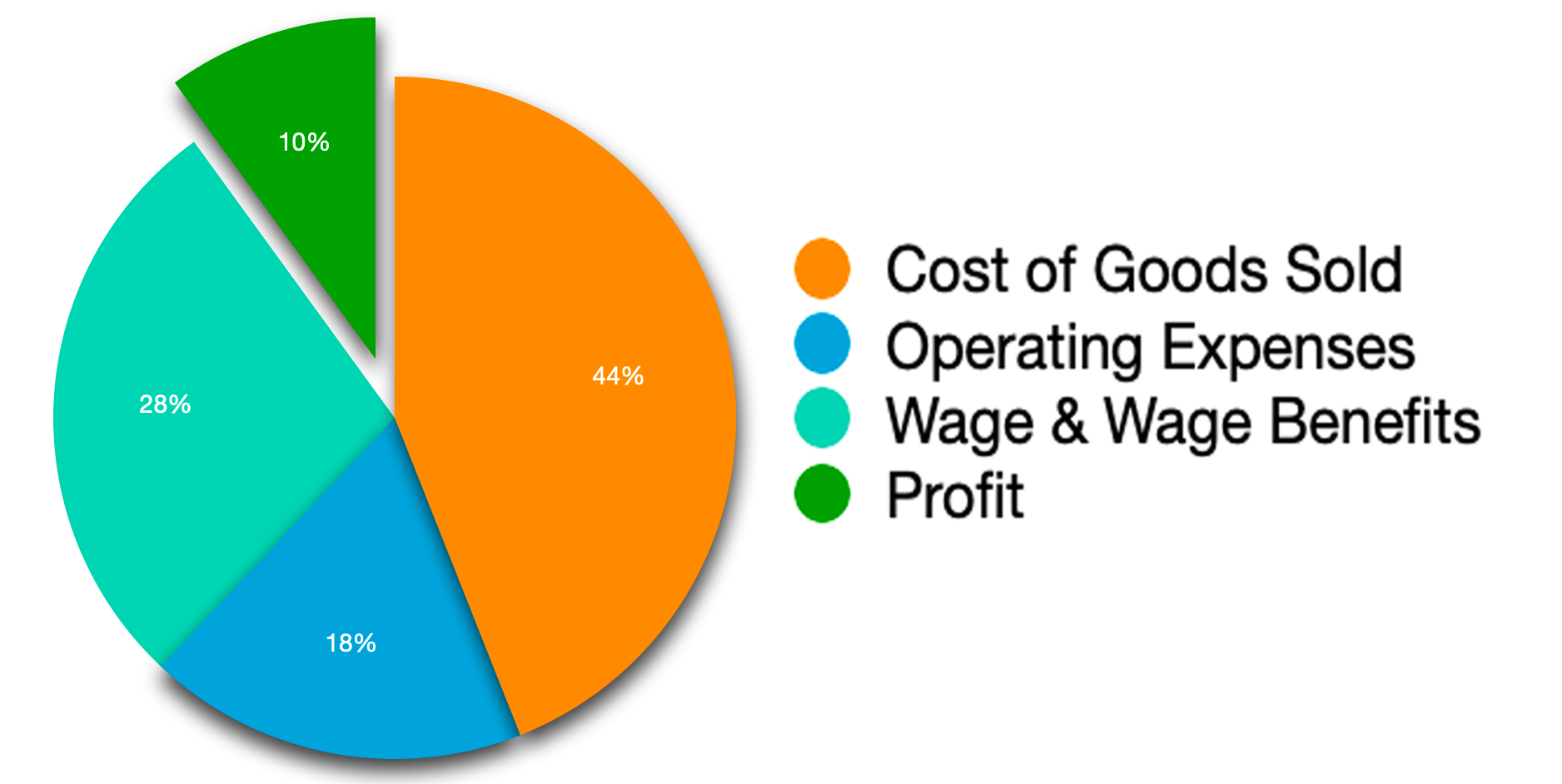A Consistent Piece of the Pie
by Tim Quebedeaux
Every week on average over 100 garden centers send in their Weekly Department Review (WDR) form. Those reports are compiled and a summary is produced and sent back out to those who reported. That summary gives the Group a quick snapshot of where sales are going for the year.
We not only get what happened by category for that week, but we also get where the group is annually through Year-to-Date revenues, transaction counts, and average sale values compared to last year at the same point. Along with other metrics such as labor to sales and Inventory at retail to sales, we get a good sense of where we are compared to last year any given week.
After we go through a year, we also have the Profit & Loss Study. This report shows us ultimately how we ended up the year profitability-wise. In a lot more detail, this study shows us our profitability down to the category level, plus many more metrics on physical facility and payments. Those that participate in both of these reports have the tools to be profitable in any year… but are they? Revenues are often pushed around by a myriad of factors, but should that flow down to profitability?
I have always been intrigued by the seasonality of the Garden Center. A lot of people in the industry will point to the seasonality of the business as a positive factor, as it keeps things interesting. It is not the same thing day after day throughout the year. Others will notice after a few years, that it is the same thing repeated year after year. Some will say it is a negative factor because you cannot count or depend on how the year will go because of factors out of your control such as weather. Either way, it is part of the business.
But in reflecting on the past few years and my experience, seasonality does not need to flow all the way down to profitability. We have seen the last few years a wave of increased Revenues and customer traffic that drove the attained Margin percent and Dollars through the roof. That flowed down into paying off all expenses and Wage & Wage Benefits (W&WB’s) leaving most Garden Centers with a healthy amount on the bottom line. BUT… that doesn’t have to work in reverse. As in the past, revenue levels didn’t always increase year to year… how did your profitability flow during those downturns? If yours trended down when revenues trended down, then you are depending on those revenues to push your profitability. Increased revenues have always hidden management problems. Has it hidden yours?

It all comes back to how you manage your Numbers & Inventory. A Simple Income Statement looks at Cost of Goods Sold (COGS), Operating Expenses, Wage & Wage Benefits, and Profit as a percentage of Revenues. These Group Goal percentages of 44%, 18%, 28%, and 10% respectively will fluctuate as Revenues fluctuate. Unfortunately, the last figure of 10% Profit will often go down as Revenues go down…. should they? Yes, the Profit Dollars can be lower with less Revenues driving lower Margin Dollars even with the same percentages, but as a percentage you can and should hold your Profit Percent steady.
During slower Revenue years, Margin Percent tends to decrease (increasing COGS percentage) due to more discounting and throwaways due to being over inventoried with less customer traffic coming through the doors. Should this be the case? Can we manage our inventory so that we do not get in that position? Short answer is YES, but is it easy… NO. It takes budgeted buying and planning to constrain on the front end, and flexibility to push your suppliers to get you product when you need it. Yes, yes, yes, the supply chain has not supported this in the last few years. I understand that, but we should all be pushing to get back to a just-in-time inventory practice that makes us profitable year in and year out.
So if you cannot keep your COGS from increasing during slower sales years, then you must balance that increase with lower Operating Expenses or lower Wage & Wage Benefits. Operating Expenses is the smallest piece of the pie, with many fixed expenses making it one of the more difficult numbers to move. As a percentage, it will increase naturally as Revenues drop. Wages would be the last number to act upon. Just as with COGS, W&WB management takes budgeting and monitoring week in and week out. It can be controlled to keep as much profit on the bottom line as feasible. During the pandemic, we saw this to the extreme, and not on purpose. We hopefully gained insight into the levels of W&WB actually needed to do business. Not to be repeated in most cases, but hidden lessons are there, look for them.
At the end of the day manage your numbers so that regardless of Revenues increasing or decreasing as the seasonality of the business comes and goes, Profit is steady and reliable year over year. Perennials come back in our gardens every year – so should our Profit!


Got questions or need more information about The Group's the Annual P&L Study or the Weekly Department Review (WDR)? Give Tim a call or email.
Tim Quebedeaux
Cell: 770.355.6249
Email: CLICK HERE
REMEMBER: Your interaction (by phone and email) with Group Service Providers such as Tim Quebedeaux, Sid Raisch, Jean Seawright, John Kennedy, and of course Danny Summers are included in your retainer! So what are you waiting for? Take advantage of all that The Group has to offer and give them a call or send an email now!

